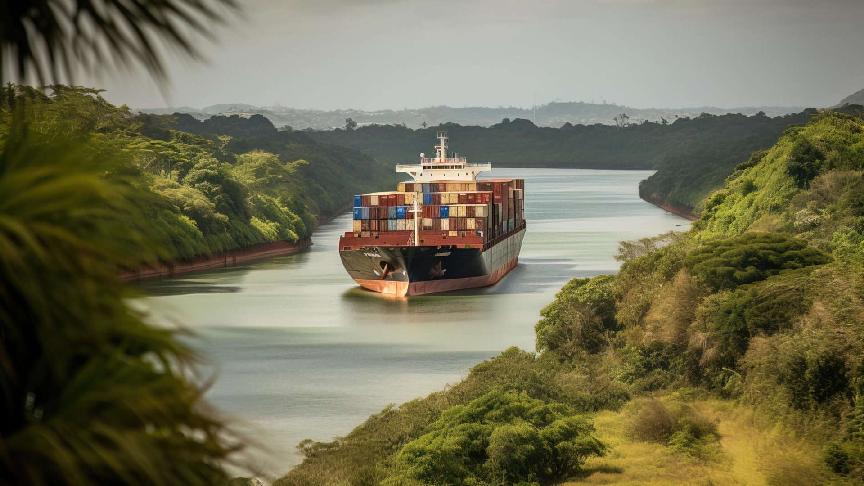The situation in the Panama Canal continues to be an issue for the shipping industry. With this market assessment, Kuehne+Nagel sheds light on the current conditions and how they have impacted containerised trade so far.
Current Situation
While rainfall in October was the lowest for the month since 1950 in Panama, improved weather conditions brought some relief to water levels in the Gatun Lake.
In October, the Canal decided to decrease the number of vessels gradually into the next year.
However, a new advisory issued last week highlighted that the Panama Canal Authority (ACP) will increase the number of vessels allowed transit to 24 as of 16 January 2024.
Impact on containerised shipping
When the first restrictions were announced, waiting times for boxships were largely unaffected as carriers tend to block their slots well in advance.
However, in November, the number of containerships waiting at Panama Anchorage increased significantly.
According to Linerlytica, the level of idle capacity reached nearly 120,000 TEU on the Pacific side and crossed the 200,000 TEU mark on the Atlantic side.
In addition, some sectors of the reefer trade could be more vulnerable to lowered capacity. Since less vessel capacity can pass the Canal, the seasonal container reefer business is also affected.
However, given that the Canal prioritises full container vessels in the assignment of slots for the Neopanamax locks, this will probably have a positive effect.
But the impact of the new decision to increase transit slots will only be felt after the implementation of the new distribution.
Carriers’ reaction
Data analysts observed that services offered by the 2M and Ocean alliances have not been significantly affected by transit limitations in Panama so far.
In contrast, several ships from THE Alliance carriers, namely Hapag-Lloyd, HMM and ONE, suffered extended waiting times. As a result, THE Alliance announced omitting some Panama transits in December.
Furthermore, multiple carriers, including Hapag-Lloyd, CMA CGM, and MSC, increased their Panama Canal Surcharge or have introduced a Panama Canal Emergency Charge.
It is important to note that these surcharges vary depending on vessels’ routes and sizes. In addition, each carrier has set a different date for applying the surcharge.
We will continue to observe the situation to see whether carriers will decide to continue with the surcharge after the implementation of the new distribution on 16 January.
On the other hand, and despite inevitable delays, carriers have already diverted some ships to the Suez Canal and the Cape of Good Hope routes. But with the current developments in the Red Sea, the Cape of Good Hope would now be the chosen alternative for leading carriers.
Kuehne+Nagel expert opinion and outlook
Kuehne+Nagel sees no major short-term improvement in the water levels of the waterway. Nevertheless, this might take a positive turn in the next few months if weather conditions improve.
In the meantime, the Panama Canal surcharges introduced by carriers are expected to have a trickle-down effect on shipping rates.
In any situation where congestion is anticipated, customers would be advised to carefully plan their shipments in advance. It is also worth taking into consideration that the Canal could reduce the transit capacity further if the drought worsens.







